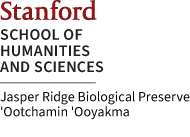Lagerstrom, Katherine Marie (2023) The wild side of E. coli: investigating the ecology and diversity of Escherichia coli in wild animals. PhD Dissertation, Biology, Stanford University.
The Anthropocene represents a period of rapid environmental change, affecting not only individual species, but also the interactions and communities of which they are a part, including the microscopic communities that exist within individual hosts. Encroachment of humans into wild lands introduces human-associated bacteria into previously naïve environmental and wild animal gut bacterial communities. The extent of the wildland-urban interface has dramatically increased in the past few centuries and continues to expand today, thereby increasing the rate microbial spillover and spillback between wild animal and human populations. Environmental pollution, such as by human and domestic animal waste, antibiotics, agrochemicals, etc., also impact microbial communities, and begets the question: Are wild animal guts truly 'wild' anymore? In this dissertation, I examine the distribution and diversity of a common bacterial species, Escherichia coli, that has been little-studied in wild animals, despite them frequently being implicated as the sources of pathogenic E. coli in agricultural contamination outbreaks. I seek to better understand the propensity of wild communities to serve as reservoirs and 'melting pots' of infectious and drug resistant diseases that could severely impact global public health, but also hope to understand the extent to which wildlife spread such diseases versus the extent of 'spillback' from humans to wildlife. My goal is to understand the relationships between E. coli, humans, and wildlife to better serve both wildlife and the public through enhancing our knowledge about the ecology and evolutionary biology of bacteria in the wild. Following a brief introduction, I begin in Chapter 1 with a scoping literature review of what we know about Escherichia coli in wild animals globally and identify significant knowledge gaps in research published to-date, including in the geographic range and host species diversity investigated so far, as well as shortcomings in the more popular sampling and statistical methods used to conduct such investigations. Attempting to address some of these shortcomings, in Chapter 2 I survey 163 scat samples from 17 different host species that utilize Jasper Ridge Biological Preserve, CA, USA (JRBP) for the diversity and distribution of E. coli at the phylogroup level using a previously developed low-cost and rapid multiplex PCR method. The results demonstrate that diversity recovered at the phylogroup level is strongly linked to sampling depth within and between hosts. These findings differentiate themselves from most previous studies that reached questionable conclusions because they were based on inadequate sample sizes. Indeed, many of the identified trends are no longer sound when deeper sampling is conducted. Based on these results, I suggest commonly employed quantitative ecological sampling methods for E. coli from wild vertebrate hosts based on calculating saturation curves for each host species assessed in the study. In so doing, I demonstrate a practical approach for developing ecologically informed, measurable, and verifiable standards to assess the true diversity of E. coli in wild animal guts that will also contribute to our understanding of their potential to act as reservoirs of human pathogens. Though inexpensive and effective at distinguishing sub-species level diversity, the E. coli phylogeny remains diverse enough such that even this level of investigation may be insufficient for accurately predicting the risk of zoonotic spillover or rate of development and spread of genes conferring antimicrobial resistances through wild animal networks and ecosystems. Thus, in Chapter 3 I selected a representative subset of the diversity acquired from each host species in Chapter 2 to conduct whole genome sequencing (WGS) and subsequent high-resolution investigations of the rate of carriage and diversity of antimicrobial resistance (AMR) genes, virulence factors associated with pathogenic E. coli, and genomic diversity across JRBP. We captured vast genetic diversity in 145 E. coli isolates that belonged to all 8 major phylogroups and two cryptic clades, and 89 unique sequence types (STs). Indeed, in this small preserve we found all global phylogroup diversity, tremendous pathogenic load, and AMR in 'wild' E. coli. Many of these STs (~20% of isolates) were strongly human-associated, and 17% carried one or more AMR gene (a.k.a. ARG). Additionally, 46% of these E. coli isolates qualified as pathogenic (to humans) based on the repertoire of virulence factors they carried. These results support a role for wild communities in harboring and potentially spreading microbes of concern to human health, but also suggest that humans contribute E. coli to the wildlife microbiome. Our findings contribute to the understanding of host-microbe evolution and provide insight into community-level transmission of E. coli. [link to publication]



